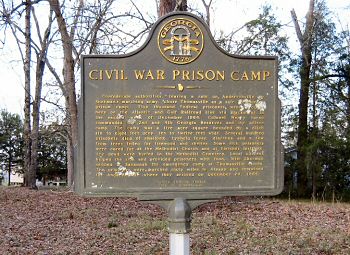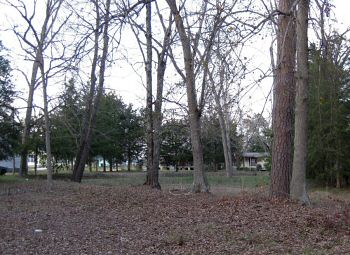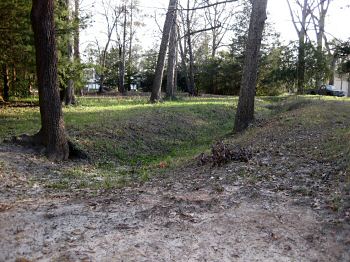|
(2009) Enlarge Under pressure from
Sherman rolling through north Georgia....prisoners from Andersonville
were sent to Thomasville GA by train and placed at this site until Dec
when marched back to Albany and by train to Andersonville
Marker: Confederate authorities, fearing a raid on Andersonville
by ShermanÆs marching army, chose Andersonville as a safe, temporary
prison camp. Five thousand Federal prisoners were brought here on the
Atlantic and Gulf Railroad Line via Blackshear in the second week of
December 1864. Colonel Henry Forno commanded the 2nd and 4th Georgia
Reserves and the prison camp. The camp was a five acre square bounded by
a ditch six to eight feet deep, ten to twelve feet wide. Several hundred
prisoners died of smallpox, typhoid fever, diarrhea, and a few from
trees felled for firewood and shelter. Some sick prisoners were cared
for at the Methodist Church and at Fletcher Institute. The dead were
buried in the Methodist Cemetery. Local citizens helped the sick and
provided prisoners with food. With Sherman settled at Savannah the
emergency camp at Thomasville closed. The prisoners were marched sixty
miles to Albany and entrained for Andersonville where they arrived on
December 24, 1864 |
|
(2009) Enlarge Walking up to the
site and the remaining moat |
|
(2009) Enlarge The moat and site
where stockade was placed - you can see in the background where the moat
turns and leads into Pic #4 |
|
(2009) Enlarge From the street
behind - A private residence sits in the central part of the prison
site. Only 2 of the 4 sides of the moat remain as the city built on half
the site |



